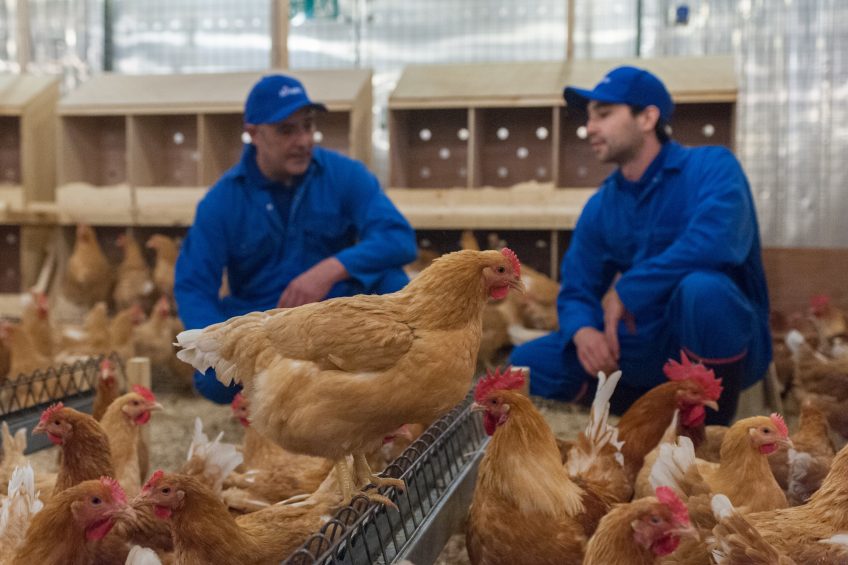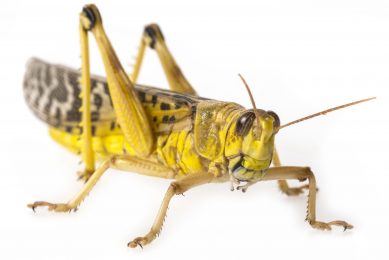Welfare organisations ramp up pressure on growth rates

Animal welfare organisations are increasingly pressing for broiler farmers to begin using slower-growing breeds to combat what they claim are health and meat quality issues. Poultry World spoke with Compassion in World Farming’s director of food business, Tracey Jones, to discover more.
With the battle over caged hens all but won, animal welfare organisations have turned their attention to broilers. For Compassion in World Farming (CIWF) and other such organisations, growth rates are the target of attention.
The charity argues that high growth rates, overcrowded conditions, poor environmental conditions, a lack of enrichment and no natural light combine to result in a system with very low welfare potential.
But it is growth rates that lie at the heart of broiler welfare, it argues, saying the intense genetic selection for high growth rate and breast meat yield – combined with continued increase in feed efficiency – has resulted in a bird with low activity, as well as leg, metabolic and physiological disorders such as ascites and sudden death syndrome.
The charity claims up to 27% of fast growing birds show cardiac arrhythmia compared with less than 1% in slow-growing breeds.
Turning to meat quality, Compassion says that recent scientific reports suggest that fast growing broilers are suffering an increase in myopathies (muscle tissue disorders), including wooden breast and white striping due to increased muscle mass.
The charity is advocating a switch to slower-growing birds, which live for 52-56 days.
It argues such breeds are move active and are likely to have better leg and cardiovascular health, as well as being more able to take fuller advantage of the extra space allowance and enrichments provided in higher-welfare systems.
Trending
Tracey Jones, CIWF’s director of food business, says there is a trend in the United States and parts of Europe for producing slower-growing breeds, which are being used in RSPCA Assured and organic production.
Ms Jones explains that Hubbard and SASSO already produce slow-growing birds for the Label Rouge market, while Cobb and Aviagen also produce birds with an intermediate growth rate. In the UK, the Hubbard JA757 and Cobb-Sasso 150 are considerably suitable for extensive indoor and free-range systems.
There has been a move towards slower-growing chicken in the Netherlands. Animal welfare organisation Dierenbescherming requires slower growing breeds for its 3-star certification scheme. Most supermarkets in the Netherlands now require slower-growing birds, while in the United States Whole Foods Market, Compass Group and Aramark have committed switching to slower-growing chickens over the next few years.
“CIWF is saying that we want to see a better model for chickens that are indoor reared to high welfare standards and that these intermediate growing birds are the best model.
“These birds would be slaughtered at between 52-56 days at between 2.2-2.4kg.”
Sustainability
While there is certainly a move among some consumers to buy slower growing birds, the US National Chicken Council (NCC) earlier this year argued that environmental, economic and sustainability implications needed to be fully taken into account.
In a report, the council said the environmental impact was an important component often left out of the equation. It argued that if just a third of broiler chicken producers in the US switched to a slower-growing breed, nearly 1.5 billion more birds would be needed annually to produce the same amount of meat.
This, the NCC argued, would require a tremendous increase in water, land and fuel consumption. If the industry did not produce the additional 1.5 billion birds to meet current demand, the supply of chicken would significantly be reduced. It argued that the cost of a third of the industry switching to slower-growing birds would be $ 9bn, which would have a notable financial impact on foodservice companies, retailers, restaurants and consumers.
But Ms Jones suggests that a more holistic position was needed. She says the health and welfare of birds needs to be taken into account; that producers would get a better margin on returns and that full carcase utilisation would also help. Too much chicken is currently wasted at various points of the food chain, including the consumer.
*Poultry World’s view: see page 5










